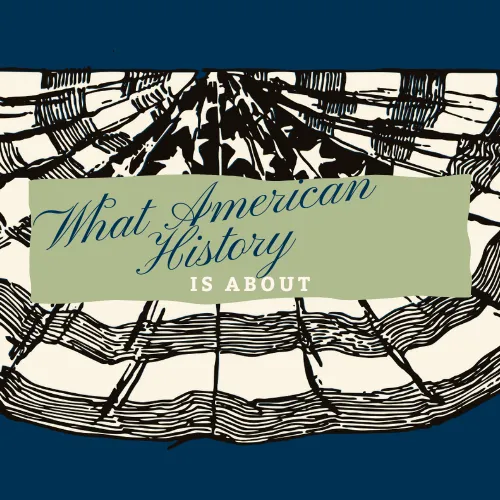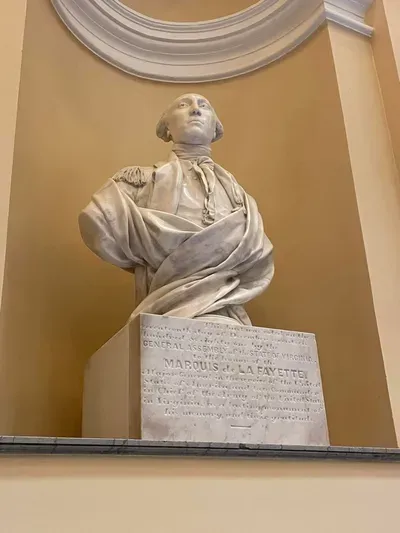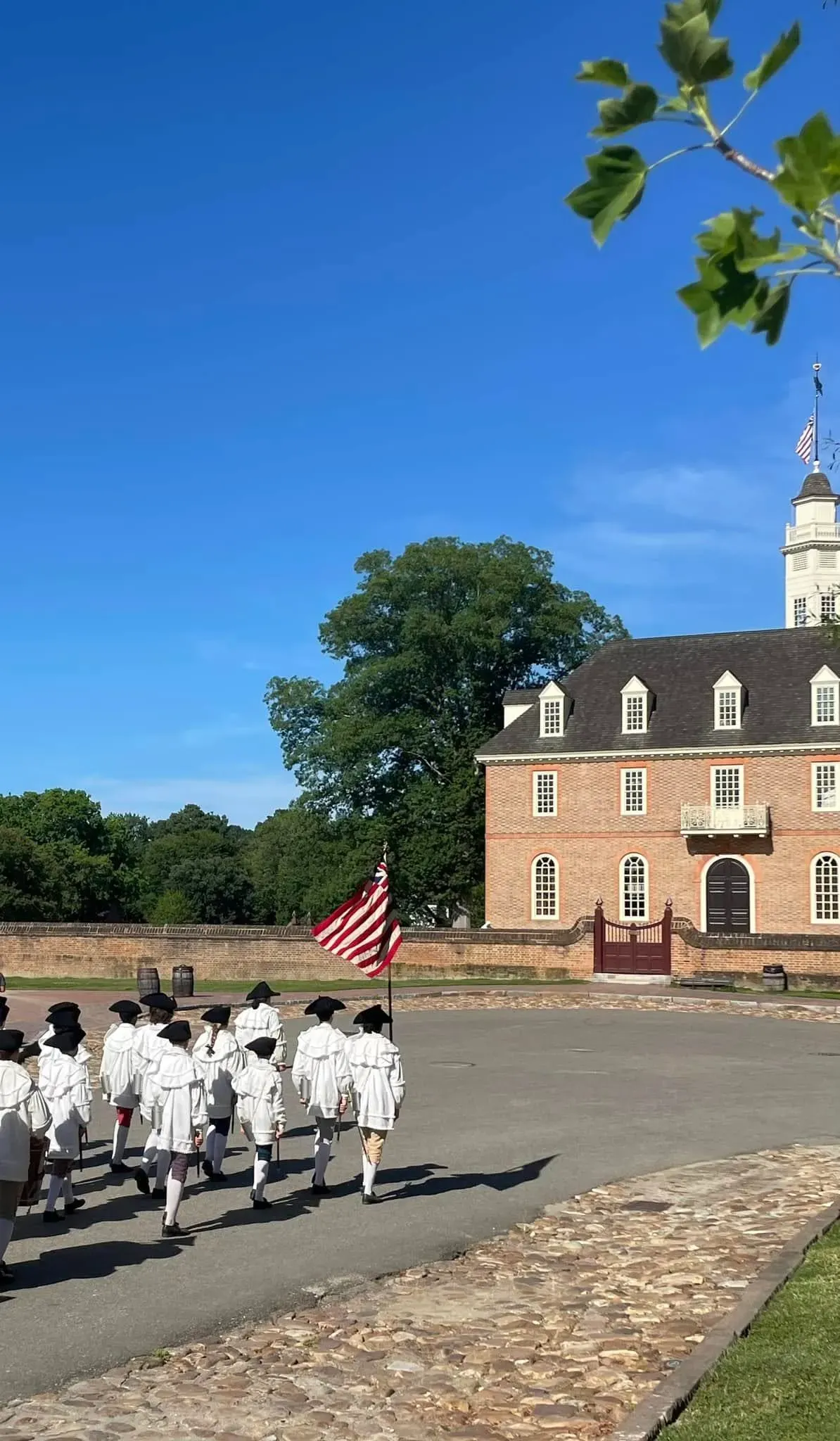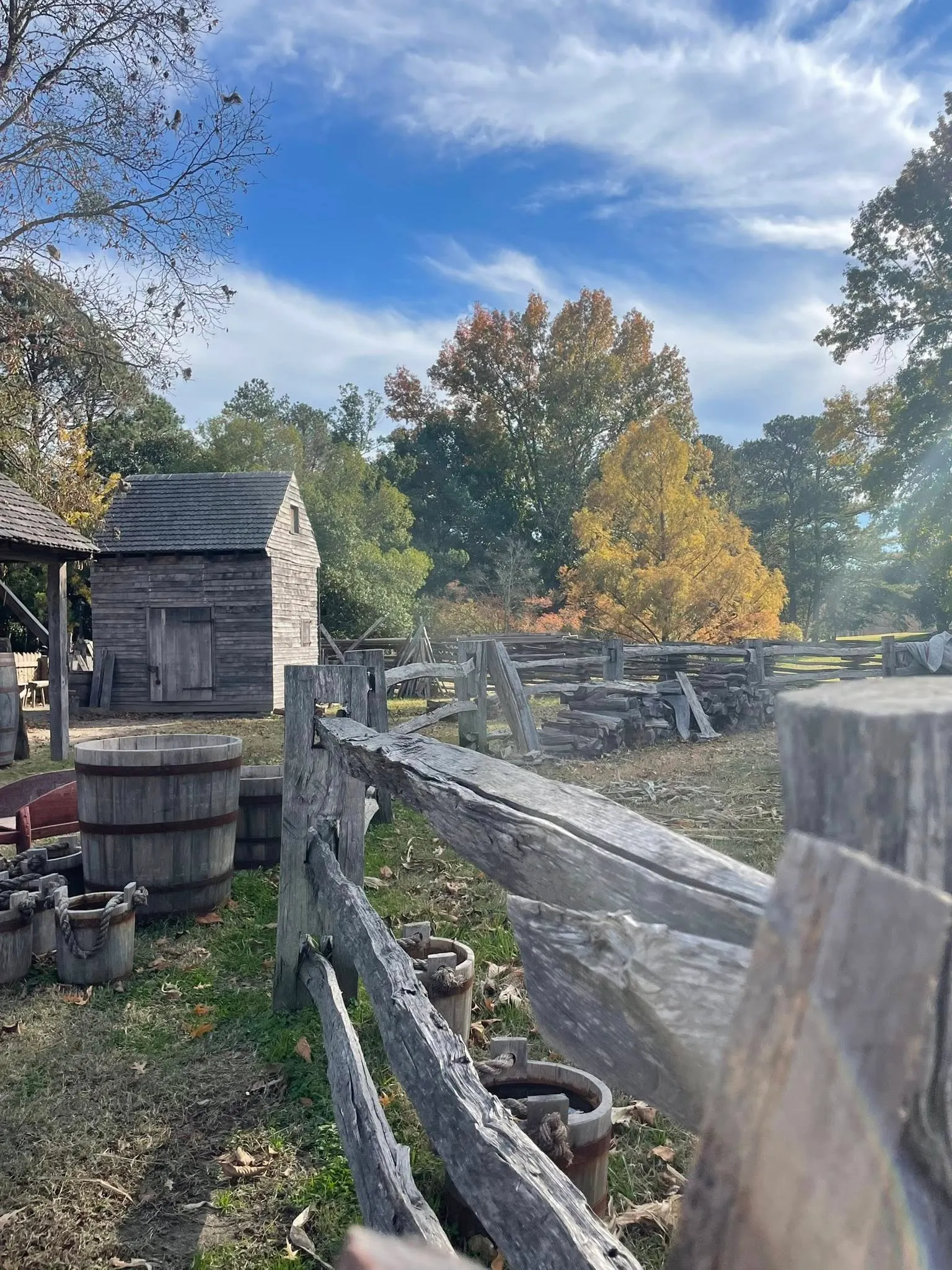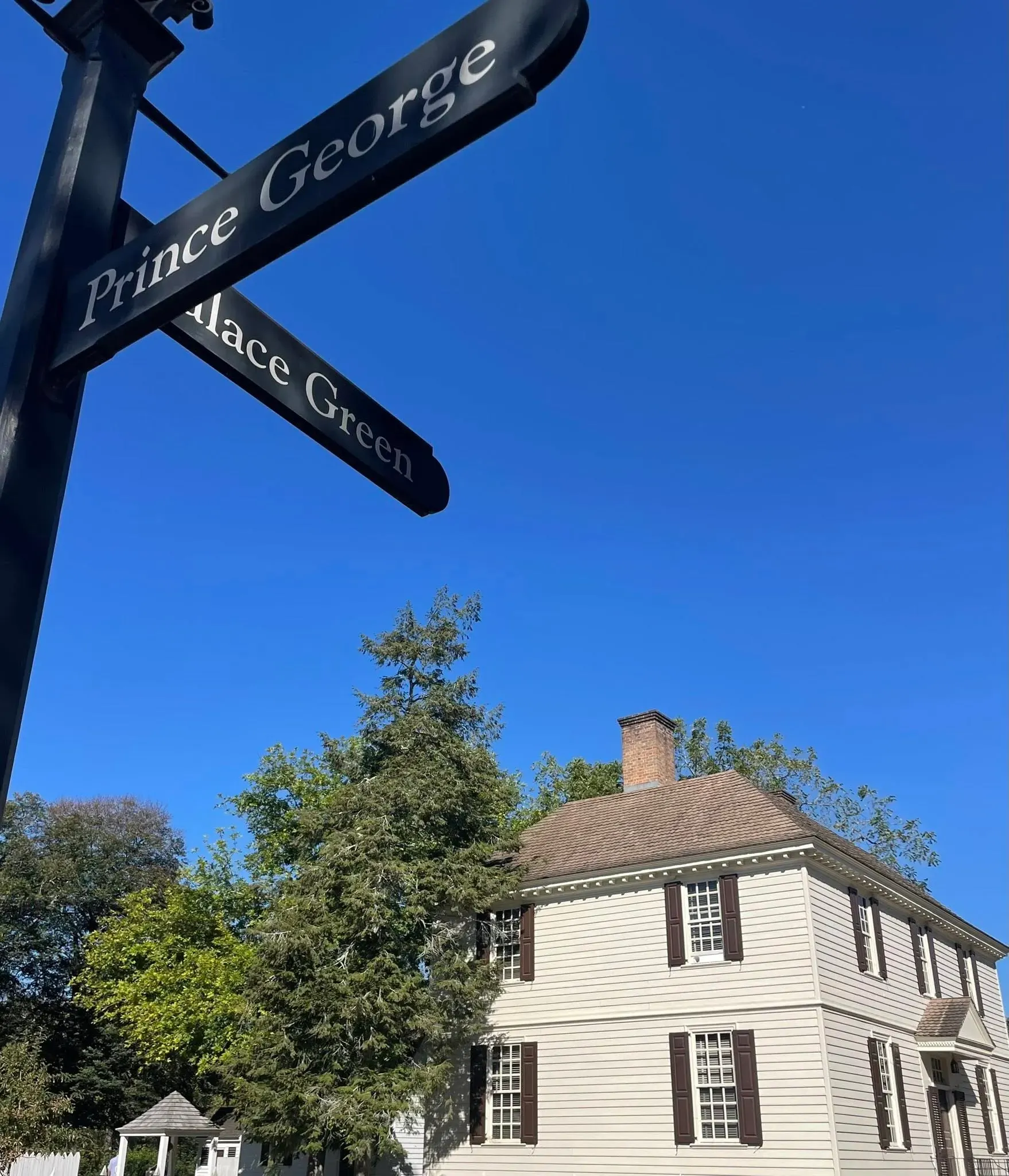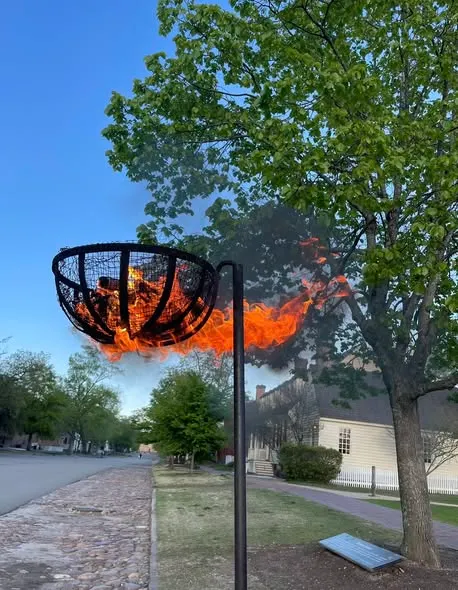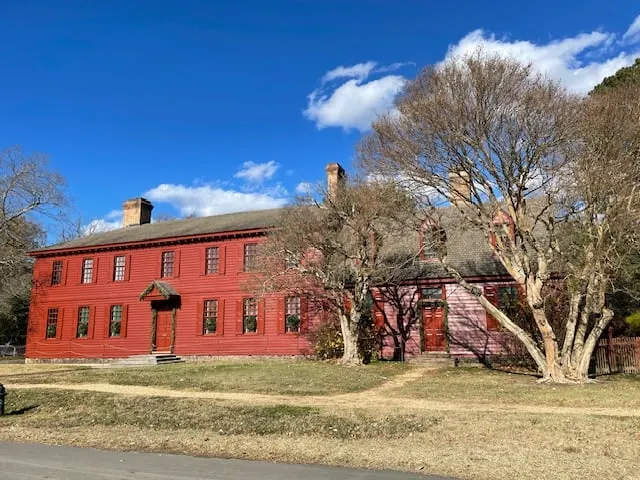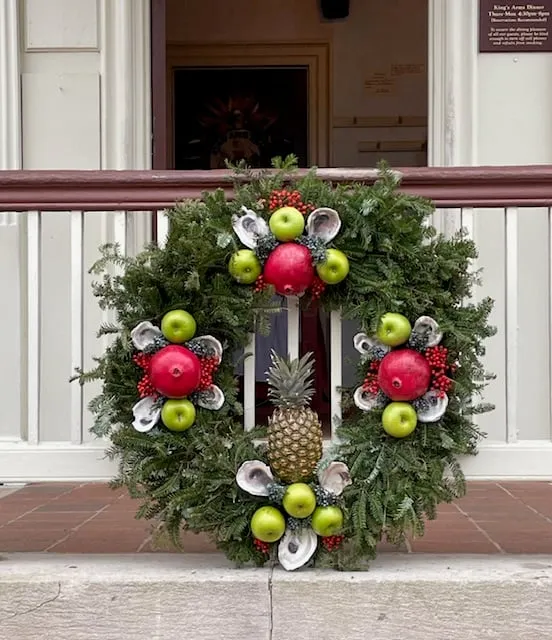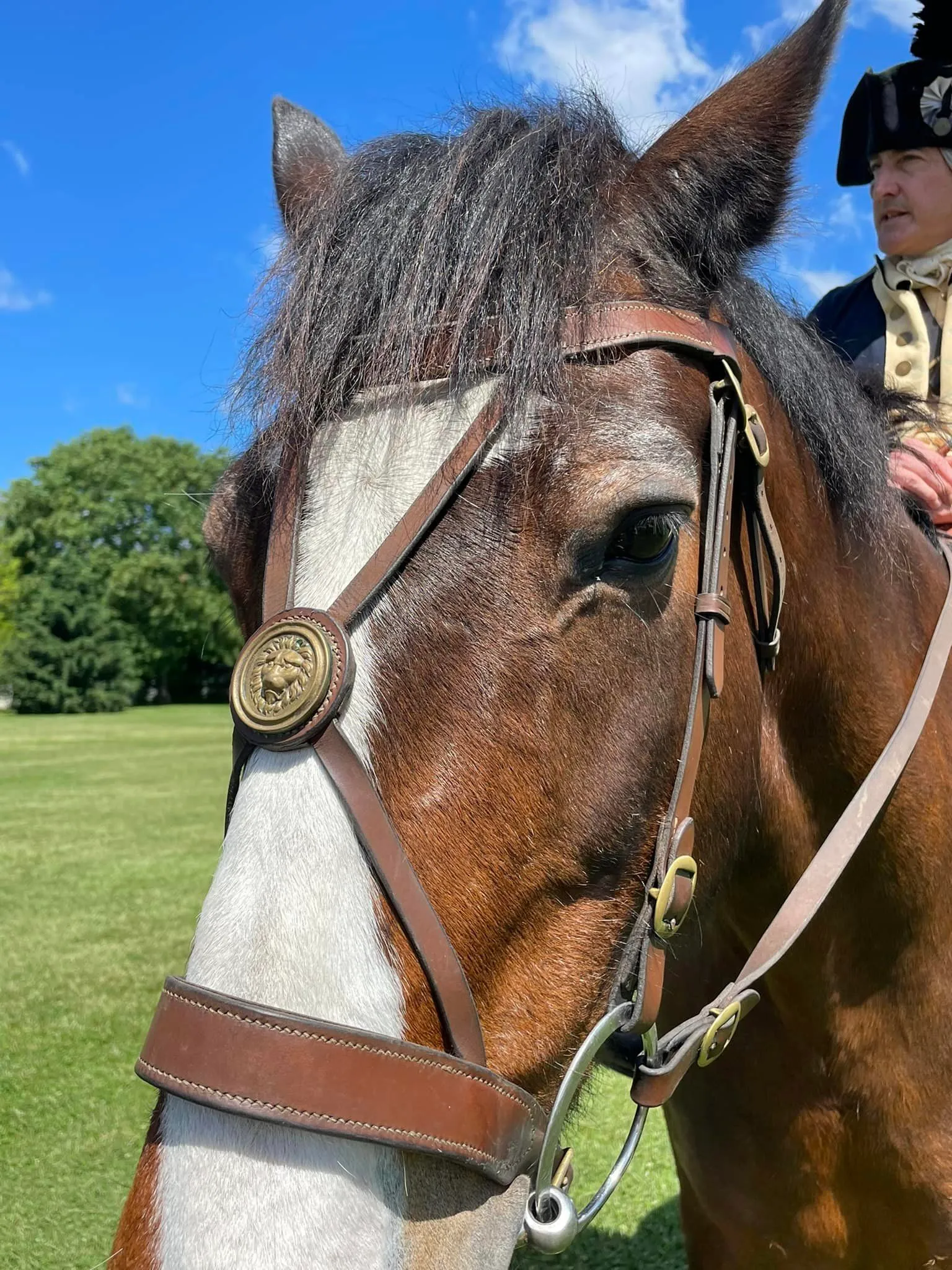Celebrating the Marquis de Lafayette: 1824 to 2024
First Yorktown, then Richmond and wherever the schedule works out!
As a history buff who is especially both fascinated and inspired by early American history, this is my year. Not only is there an entire year dedicated to celebrating the Marquis de Lafayette's 1824 return to the United States of America, but plans for our nation's 250th anniversary of independence are well underway!
You'll see more on this blog as we approach July of 2026, but today I'm dropping a post about celebrating my favorite Frenchman who served in our Continental Army: the Marquis de Lafayette.
Last weekend we kicked off our personal celebration of the Marquis' 1824 visit in the place he's possibly most well-remembered for being: Yorktown.
It was standing room only in York Hall, where Colonial Williamsburg's Mark Schneider, who has a degree in history and is a veteran of our U.S. Army himself, raised the roof (so to speak!) as he always does.
Mark's vigorous and passionate portrayal of the Marquis is infectious and we were all entranced by his story, the importance of which I shared here in my Independence Day post.
Yesterday we headed to Richmond. Specifically, to our Virginia State Capitol to honor Lafayette Day in Virginia! Included: special programming by the American Friends of Lafayette.
RELATED: Click here to see what we did in Richmond- it's celebrated annually so you can plan to attend next year!
Affiliate Disclaimer: As a blogger, I use affiliate links sometimes! I may receive commission from purchases I share; it does not change your price but sometimes you might get a discount.
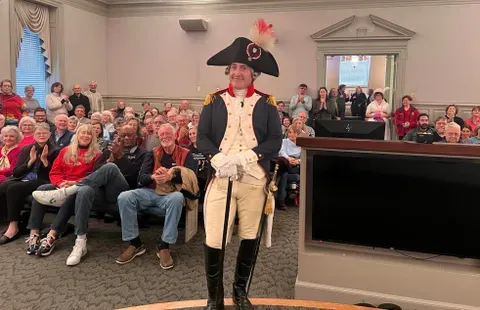
Mark Schneider, York Hall in Yorktown, March 2024
The importance of the Marquis de Lafayette's 1824 tour.
When President Monroe was in office, he invited the last living American Major General of the Revolutionary War to tour all 24 states.
The man Monroe invited: The Marquis de Lafayette. He accepted this invitation to a country he had not visited in four decades but which he helped create. When the Marquis said his 1784 goodbye to General Washington in Maryland, there were only 13 states.
This one man's decision to defy his king and 'join up' for the American cause is recognized throughout the United States as his name appears on street signs, statues, cities, and buildings that many of us have seen, heard of, or visited.
And I want to spread the word of who he is and my belief in honoring him.
If you read my earlier post about the Marquis, you have some insight into his journey to support our cause. Truly, his actions to get here and then serving in our Continental Army as such a great leader, tied France to our nation from the beginning.
A few facts shared at today's presentation at the Capitol:
- France was the first to recognize the United States of America as an independent nation. - referenced by Caroline Monvoisin, Consul General of France in Washington, who we were honored to have speak yesterday.
- House Resolution No. 797 offered on February 10, 2015 designated March 14th as Lafayette Day in Virginia.
- Lafayette's bust was placed in our Capitol's rotunda before those of all the Virginia Presidents around him. Their busts were created to match his in both look and proportion.
- Lafayette was naturalized as an American citizen by the Legislature.
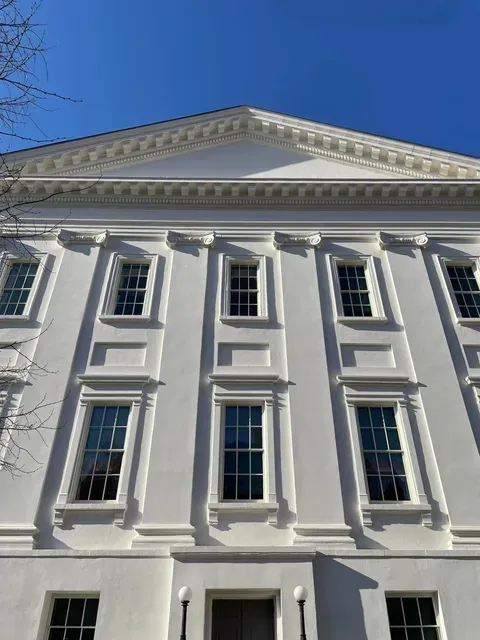
Rear view of the original portion of the 1780s Virginia State Capitol
Here is how you can participate and celebrate the Marquis de Lafayette's 200th anniversary of his 1824 tour.
Follow the American Friends of Lafayette. Click here to learn about this fantastic organization, support it, and check out future events.
Follow VA 250: American Revolution. While our 250th will be celebrated throughout the nation, Virginia, specifically Colonial Williamsburg has taken the lead. (I mean, this is where the very first vote for independency took place, right?).
Click here, see who is involved and what might be happening in your state.
Honor the Marquis by visiting places he is remembered. Cities, museums, parks... so many! If you're within reach, honor him this year and into the future!
If you're ever out our way, stop by the Virginia State Capitol in Richmond, where French sculptor Jean-Antoine Houdon's 1781 bust of Lafayette looks out towards Houdon's statue of Washington in the rotunda.
Visit his grave in France if you're nearby. He is buried with his beloved Adrienne and her family- at Picpus Cemetery, but with soil from his second country, the United States of America. Learn more here.
Read about him. I happily found a reference to him in The Hidden History of Music Row. (click here to check out the book)- he really is everywhere!
But seriously, in addition to searching his name in the search bar at the top of this blog to find references, go to one of my favorite places: this website sharing transcribed letters from history.
And of course... please share your ideas and suggestions in the comments!
Houdon's 1781 bust of Lafayette
Closing it out with words from history.
By my math, the Marquis was 20 or 21(his birthday is in September) when he wrote this letter Washington. Though young in years, his mind and his soul seem beyond those years. The weight and responsibility he felt in his unique role, as well as his admiration for Washington as a mentor, friend, and leader is clear. He closes saying he has many things he'd like Washington's advice on.
I'm dropping an excerpt, but you can click here to read the letter in full, with citations.
To George Washington from Major General Lafayette, 24 September 1778
From Major General Lafayette
Camp Near Warren [R.I.] 24 September [1778]
My dear general
I am going to Consult your excellency upon a point in which I not only want your leave and opinion as the Commander in chief, but also your Candid advice as the man whose I have the happiness to be the friend—in an adress from the British Commissaries to Congress, the first one after jonhstone was excluded, they speack in the most di[s]respectfull terms of my Nation, and Country—the whole is undersign’d by them and more particularly by the president lord Carlisle1—I am the first french officer in Rank of the american army, I am Not unknown to the British, and if Somebody must take Notice of Such expressions, that advantage does, I believe, belong to me—do’nt you think, my dear general, that I schould do well, to write a letter on the Subject to lord Carlisle, where I Should Notice2 his expressions in an unfriendly manner—I have mentionn’d some thing of that design to the Count d’estaing but want intirely to fix my opinion by yours which I instantly beg as soon as you will find it Convenient.3

Are you enjoying the blog? Use my online tip jar and buy me a coffee:
There is a huge practical disclaimer to the content on this blog, which is my way of sharing my excitement and basically journaling online.
1) I am not a historian nor an expert. I will let you know I’m relaying the information as I understand and interpret it. The employees of Colonial Williamsburg base their presentations, work, and responses on historical documents and mainly primary sources.
2) I will update for accuracy as history is constant learning. If you have a question about accuracy, please ask me! I will get the answer from the best source I can find.
3) Photo credit to me, Daphne Reznik, for all photos in this post, unless otherwise credited! All photos are personal photos taken in public access locations or with specific permission.
